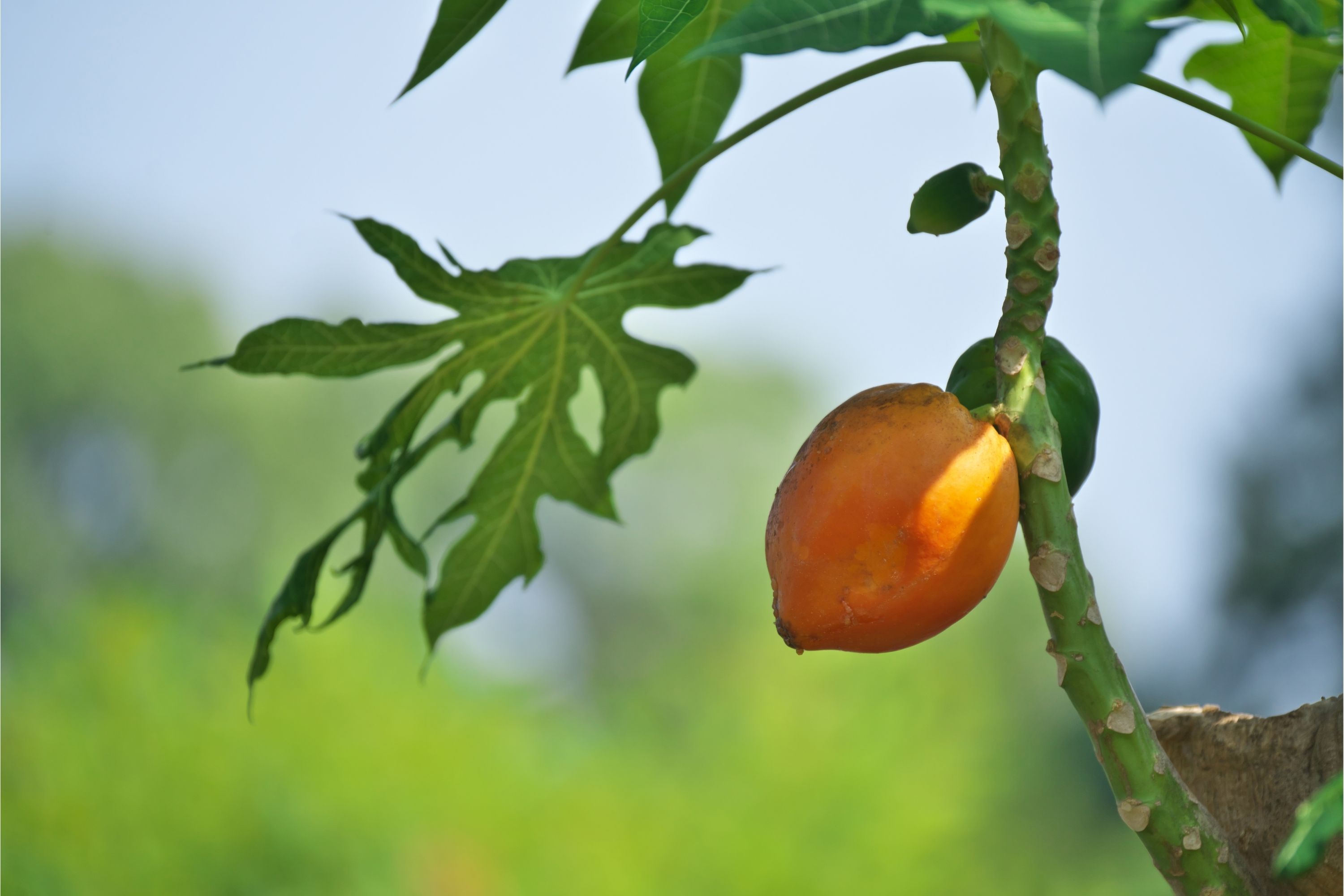Papaya
(Carica papaya)

Description
Carica papaya is a popular tropical fruit tree, native to Mexico and Central America. It belongs to the family Caricaceae and is commonly known as the papaya plant. The papaya plant is grown for its delicious and nutritious fruit as well as for its medicinal properties. The plant is widely cultivated in tropical and subtropical regions worldwide, including Asia, Africa, and South America. Botanical Description: The papaya plant is a small, fast-growing tree that can grow up to 10 meters in height. The plant has a single stem that is soft and hollow, and the leaves are large, simple, and deeply lobed. The leaves are spirally arranged, and the plant has no branches. The flowers of the papaya plant are unisexual and are borne on separate plants. The female flowers are larger than the male flowers and are located near the base of the tree. The fruit of the papaya plant is a large berry that can weigh up to 5 kilograms. The fruit is oblong in shape, and its skin is thin and smooth. The flesh of the fruit is yellow or orange, sweet, juicy, and contains many small black seeds. Cultivation: The papaya plant is easy to cultivate and can be grown in a variety of soils. The plant prefers well-drained, fertile soil with a pH between 6 and 7. The plant requires plenty of sunlight and water, and it is sensitive to cold temperatures. The plant can be propagated by seed or by vegetative means, such as stem cuttings or tissue culture. Harvesting: Papaya fruit can be harvested when they are green or when they start to turn yellow. The fruit is harvested by cutting the stem close to the fruit with a sharp knife. The harvested fruit should be handled with care to prevent damage to the skin. The fruit can be stored at room temperature for a few days or refrigerated for up to two weeks. Uses: The papaya plant has many uses, including culinary and medicinal uses. The fruit of the plant is a rich source of vitamins A, C, and E, as well as potassium, magnesium, and fiber. The fruit is commonly eaten raw, but it can also be used in smoothies, salads, and desserts. The seeds of the papaya fruit are edible and have a peppery flavor. The leaves of the plant can be used to make tea, which is believed to have medicinal properties. The plant is also used in traditional medicine to treat a variety of ailments, including digestive problems, skin disorders, and menstrual pain. Medicinal Properties: The papaya plant contains a variety of bioactive compounds that have been shown to have medicinal properties. The fruit of the plant contains papain, an enzyme that aids in digestion and has anti-inflammatory properties. The fruit also contains carotenoids, which are antioxidants that help protect the body against damage from free radicals. The leaves of the papaya plant contain alkaloids and flavonoids, which have been shown to have anti-inflammatory and analgesic properties. The seeds of the papaya fruit contain benzyl isothiocyanate, which has been shown to have anticancer properties. Conclusion: In conclusion, the papaya plant is a versatile plant with many uses. The plant is easy to cultivate and produces delicious and nutritious fruit. The plant also has medicinal properties and is used in traditional medicine to treat a variety of ailments. The papaya plant is an important crop in many tropical and subtropical regions worldwide, and it is an excellent addition to any garden or farm.
Taxonomic tree:







